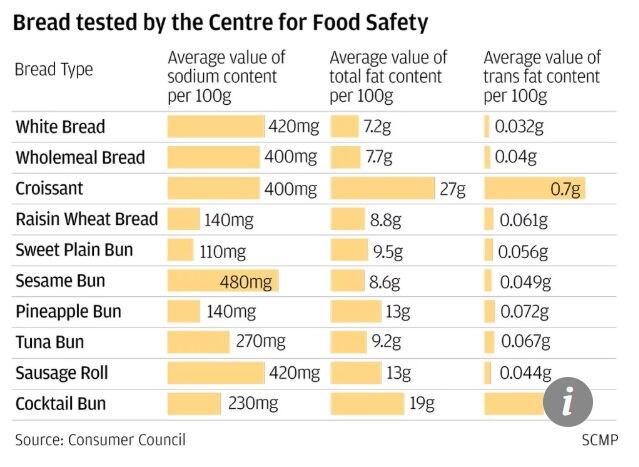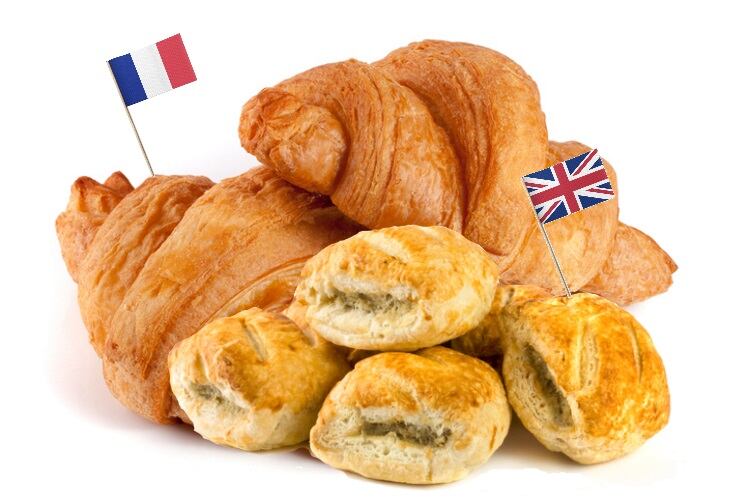The consumer watchdog’s latest study found that 15% of the 110 bread samples tested were either high in fat or sodium.
The biggest culprits were croissants (essentially French, but with origins in Austria) and sausage rolls (a British invention).
All 10 croissants tested were classified as ‘high fat’ and a single sausage roll accounted for almost 30% of the World Health Organization’s (WHO) recommended daily intake limit.
Conversely, pineapple buns – a typical Hong Kong treat known as bo lo baau – was found to be low in sodium and fat. (Despite the name, a pineapple bun does not traditionally contain pineapple; rather, the name refers to the look of the characteristic topping.)
Penchant for Western products
However, Chinese consumers have a particular proclivity for Western products.
Cecelia Yang, senior research associate at Euromonitor International, told BakeryandSnacks the evolution of China’s ‘thunderous’ bakery market consists of the integration of traditional Chinese baked snacks with trendy Western products.
It is no less so in Hong Kong, where the bakery sector is forecast to value at US$652m in 2018, according to statista.
The Centre for Food Safety (CFS) – which conducted the study in collaboration with the Council – warns that too much sodium could lead to high blood pressure, increasing the risk of heart attacks and stroke, while excess fat has been linked to an increased risk of heart disease, obesity, hypertension and diabetes.
However, Dr Henry Ng Chi-cheung, principal medical officer at the CFS, said consumers do not have to reject these tasty morsels, but rather maintain a balanced and diverse diet.
“Consumers should not eat just one or two types of bread but vary their consumption among several types. Then they may be able to reduce health risks,” he said.
The study

The food safety authority studied the sodium, total fat and trans fat content in 110 bread samples across 10 types of bread, including white bread, wholemeal bread, croissants, raisin wheat bread, sweet plain buns, sesame buns, pineapple buns, cocktail buns, tuna buns and sausage rolls.
The center’s benchmark of ‘high fat’ foods were those that contained anything above 20g/100g, while the WHO’s recommendation of an adult’s daily sodium intake should not exceed 2,000mg. The WHO also recommens daily trans-fat intake should not exceed 1% of a person’s required daily energy consumption, so for a women’s daily intake of 2,000 calories, trans fat intake should be less than 2.2g.
The study found all 10 samples of croissants had a total fat content ranging between 23g to 31gs/100g.
Three cocktail buns also fell under the same category.
Sesame buns had the highest average amount of sodium, with 480mg/100g on average, followed by sausage rolls, white bread, wholemeal bread and croissants.
Pineapple buns, sweet plain buns and raisin wheat bread were considered ‘low sodium’ with between 21mg to 120mg/100g, however, the total fat content of all the bread samples was more than 3g/100g, so none met the ‘low fat’ criterion.
The trans-fat content of white bread and wholemeal bread had the lowest average content of 0.032g and 0.040g/100g, respectively.
The CFS added the salt content of prepackaged white (443mg/100g) and wholemeal (446mg/100g) bread should not be ignored, especially when adding high salt fillings like cheese and ham to make a sandwich.
Dr Ng noted the center will be talking to the bakery sector on how to improve production processes and ingredients in order to minimize the sodium, total fat and trans fat content in baked goods.


